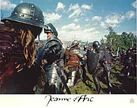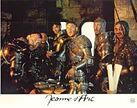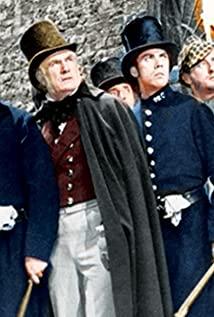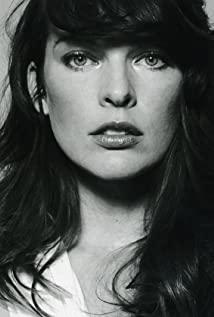Let's talk backwards, let's talk about Joan's death first. To see the death of Joan of Arc, we must first understand the death of God. Nietzsche's "death of God" does not mean that God does not actually exist, but that God was killed by "we". "We" are no different from the Jewish and Roman soldiers who crucified Jesus and insulted and condemned him in the Gospels, "we" are all devils, or are tempted by the devil (more on this later). The death of Jesus is a key step in the completion of the entire Christian doctrine. Jesus used his own death as a sacrifice to redeem mankind from the devil (human beings have original sin, so they must die, and after death they return to the devil, while Jesus has no original sin, originally The undead. The undead are dead, so the devil who is responsible for death has committed a crime and must make amends, and this compensation is the release of mankind). We should all understand that Christians' faith in God is often expressed through "imitation of Christ", so Joan of Arc's death (like God was tied to a cross and executed by "all") can be understood as Joan of Arc's death by "imitation of Christ" The "extreme imitation" of Christ obtained the ultimate redemption of the soul, and it can also be understood that Joan of Arc is the incarnation of God at this time (the director expresses God through Joan of Arc), and Joan of Arc's death is another reproduction of God's death (historical). It is always strikingly similar, basically all the prophets, apostles, and even famous believers in Christianity were first put to death by people who did not believe and understood, and then were canonized): Jesus was not by his own people (according to his The benefactor) believed (he was the king of Judea, the son of God) and was bound to the cross by his own people to be executed, but at the moment of death, in fact, everyone had recognized that Jesus was the son of God and the king of the Jews (Please see the description in the Gospel of Matthew), the moment of Jesus' crucifixion was actually the moment when Jesus was crowned King of Judea. The same is true for Joan of Arc, the moment of her crucifixion is the moment when her soul is truly saved, and she truly feels the "righteousness" of God at that time, because she has been integrated into the body of God by imitating the "death" of Jesus. He became a sacrifice to the devil with Jesus, and he also saved himself from the temptation of the devil and washed away his "sin".
Let's talk about Joan of Arc's "sin". What was Joan's sin? Joan of Arc must be guilty, otherwise she would not have been filled with the struggle with the devil (the imaginary man in black in the second half of the film is the incarnation of the devil). Human beings have original sin, and original sin comes from the temptation of the devil (the forbidden fruit in the Garden of Eden). The devil seduces people's desires (we call it human nature), and people rely on their desires (human nature) to produce all social and secular institutions and facilities (that is, human civilization), so in fact, all social and secular things are created by Only by transcending all worldly things can human beings get rid of the temptation of the devil and be redeemed with God. In the film, Joan of Arc's "revenge" means sin, which comes from the devil's emotion, because this emotion is secular, and "revenge" makes Joan of Arc unable to "love your enemy" as said in the Gospels . God is a universal belief and loves all people, so it is impossible to love people in one country and not people in another country. In God’s eyes, all people are sinful and waiting to be redeemed. “Love your enemy”, emphasizing that Treat everyone equally (this is the embodiment of Christianity's transcendence of secularity), Joan of Arc could not have done this (refer to Joan of Arc when she was a child at the beginning of the film), "revenge" occupied an important place in her heart (later The letter for God was actually driven by her inner vengeance), and she suddenly discovered her "sin" when she saw the corpses on the ground after the victory of Orlan, and she was even more hurried when her partner wanted to kill the captives and get their teeth. To stop - Joan of Arc has begun to "love the enemy" at this time, and at this time she is a progress on the road of faith. But then when Joan of Arc went to liberate Paris, she lost the transcendence of "loving the enemy". She was "seduced" by the glory of victory and patriotism (these are worldly emotions, God would not have these emotions) , must beat the British out of Paris instead of negotiating peace, which is actually showing Joan of Arc being lured by the devil. And once you long for war, or feel the pleasure and glory in the war, you can say more "sins", such as the devil's questioning of Joan of Arc in the British prison and the questioning of sword and banner during the religious trial , at these times, it was obvious that Joan of Arc felt her guilt—it was only then that she gradually understood that "revenge" and "war" were wrong from the beginning, and they couldn't stand the inspection of God. These are devils the allure.
Third, let’s talk about the temptation of the devil. The gods and devils in the film are actually Joan of Arc's illusions, the embodiment of her inner thoughts. Of course, it is also understandable that the incarnation of the devil is the temptation of the devil. The devil seduces her step by step to discover the true thoughts in her heart and makes her "repent". In the process of "repentance", Joan of Arc will discover her true thoughts and her sins. This process (the process of discovering "heart") is very important. The key is because "heaven (God)" is not after death, nor at the end, but in one's own heart, but equally hell is also in people's hearts, and it is only one step away from heaven. The discovery of the heart is possible Follow God and possibly follow the devil. Joan of Arc had betrayed God after discovering her sin (during the Inquisition, it was an act of breaking the covenant with God's "messenger"), but then quickly returned to painting (the man in black is not exactly a devil). The incarnation of Joan of Arc is actually the inner thoughts of Joan of Arc, but it is only said by others to remind Joan of Arc's true inner thoughts) - As Joan of Arc herself said, what she wants is never the rescue of the body, but the soul 's rescue. The rescue of the soul is difficult, and all the thoughts in the heart need to be unblocked, there will be no stagnation, and there will be no psychological disputes. Sin not only needs to be forgiven by others, but also needs to be forgiven by oneself (God is in the heart of man, and his forgiveness is often in the form of asking God for forgiveness. appeared), so Joan of Arc was natural when she was burned, her sin was recognized by herself, and she figured it out, she had gone to God. Of course, the temptation of the devil can also be viewed from another level. The "devil" is virtualized and does not make a specific image. In fact, Joan of Arc's every move after coming to the French royal palace is in response to the devil's temptation. For example, the priests in the palace need her to use some "miracles" to prove their identity. , but Joan of Arc said "I'm not here to conjure" - which is exactly the same as the devil's second temptation of Jesus in Matthew (the devil makes Jesus jump off a cliff to see if an angel will catch him and let Jesus prove He is the son of God, but Jesus said, "God is not tempted", exposing the devil's temptation to his "belief" in God. If Jesus jumped, no matter whether an angel came to pick him up, it has already proved that Jesus is not to God. Totally trusted)!
Finally, let's talk about the theosophical issue in the film. Theism is to explain "why there is evil in the case of God's perfection". There are various explanations for theism in history, which are also involved in this film. For example, Joan of Arc asked the priest in the film, "Since God loves us, why would he fight? Why would he let people who don't deserve to die?" You are the one chosen by God, so let you live at the cost of your sister's death. The specific explanation of theism that we can also see in the film (this is also the most understandable explanation) - war and death are the sins of human beings themselves, and their root causes are human desires (also original sin). God created the world, but human beings betrayed God at the very beginning, so when they obtained original sin, all the sufferings in the world are the consequences (and punishments) of original sin, but God is also perfect, and He incarnated as a human "Jesus", To save people who fell into the hands of original sin (the devil), but people didn't believe him, didn't understand him, insulted him, and put him to death on the cross. Jesus also took on the sins of all people and sacrificed for redemption together - Joan of Arc The same is true, seeing her own sins clearly and assuming the sins of others (not believing or understanding the God she represents), this is actually like Jesus saving the world through his own death.
Mention the depiction of the Eucharist at the front of the film - Joan of Arc took out the chalice from under the crucified Jesus and poured herself red wine - this is part of the Holy Communion in Catholicism, and there should still be bread. Red wine represents the blood of Jesus, bread represents the flesh of Jesus, and eating the sacrament means that believers have become one with Jesus. The Eucharist means joining in the sacrifice of Jesus. As mentioned earlier, Jesus redeemed mankind by offering his own sacrifice to the devil. In this sacrifice, Jesus was both the person who presided over the sacrifice, the sacrifice, and the object of redemption (three days later). Resurrection), and believers become part of Jesus' body by eating Jesus' flesh and blood, and complete sacrifices with Jesus to obtain redemption.
So much to say. I'm not a believer, I'm just doing some basic religious explanations. I don't want people who don't understand religion to understand it and spray it. It's a piece of shit. I think this movie is really good.
View more about The Messenger: The Story of Joan of Arc reviews











